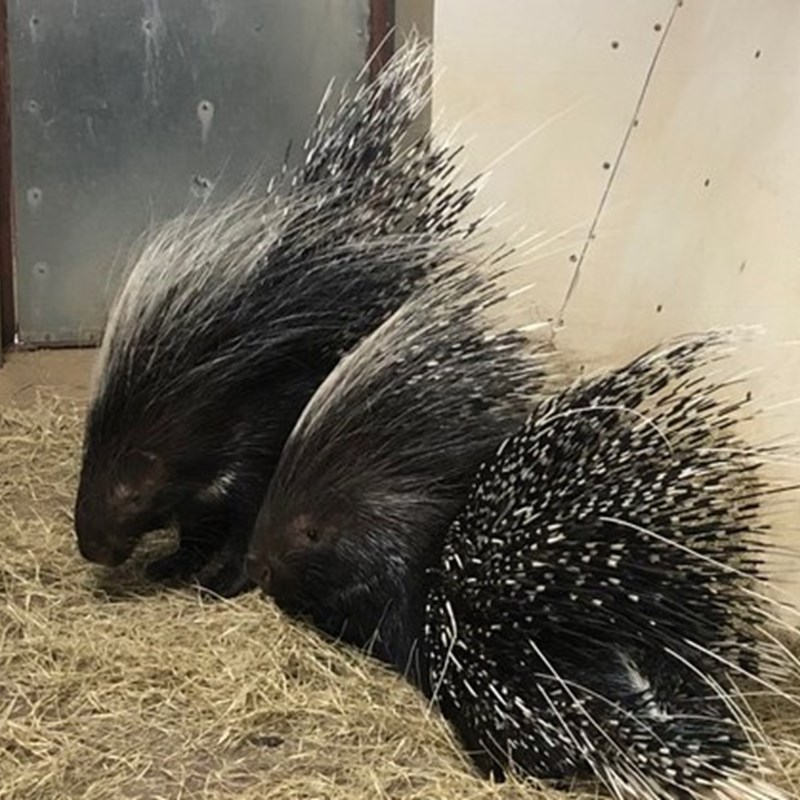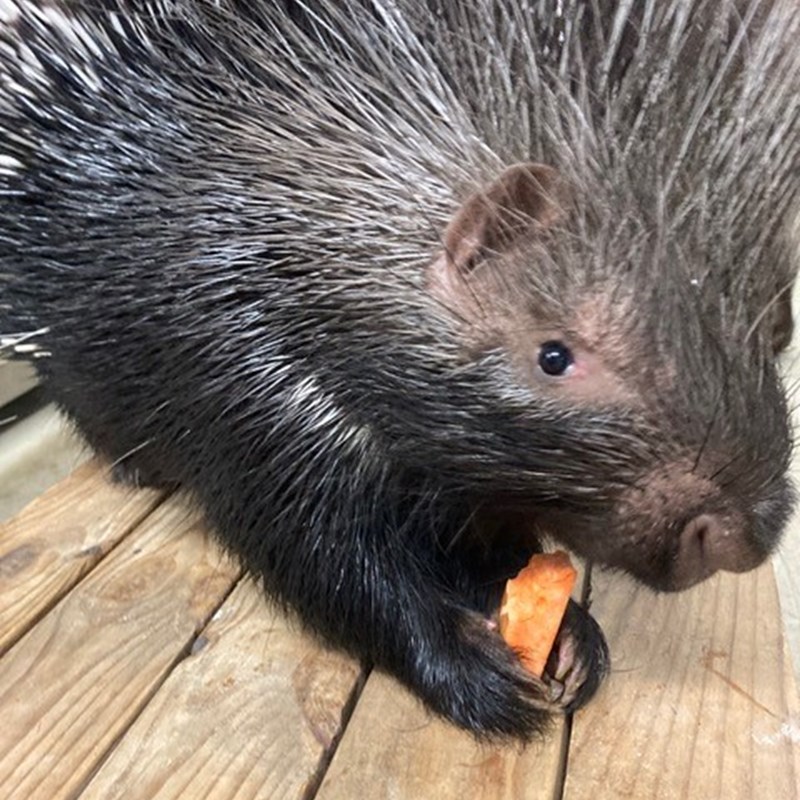Rodents
Rodents make up the largest group of mammals on Earth, with over 2,000 species found in various habitats worldwide. These small mammals are characterized by their continuously growing incisor teeth, which they use for gnawing and chewing on a variety of materials. From the industrious beaver to the agile squirrel and the adorable guinea pig, rodents exhibit a wide range of behaviors, adaptations, and lifestyles.



Indian Crested Porcupine
Porcupine hair is modified to form spines or quills. There are layers of these quills, longer and thinner one on the top with thicker, shorter ones underneath. Each of these quills is black to brown in color with varying bands of white. The tail is covered in short, whitish spines, some of which are hollow and produce a rattling sound when shaken. Their hands and feet are broad with sharp claws. They also possess small eyes and large noses.
Range/Habitat:
The Indian porcupine is found throughout southeast and central Asia and in parts of the Middle East, including such countries as India, Nepal, Bhutan, Bangladesh, Sri Lanka, Pakistan, Israel, Iran and Saudi Arabia. They inhabit a variety of habitats, favoring rocky hillsides but also tropical and temperate scrublands, grasslands, and forests.
Size:
Body length: 2.25-3 feet, Tail length: 3-4in. Weight: 24-40lbs.
- Indian crested porcupine quills may reach lengths of up to one foot!
- Porcupine quills are simply modified hair. African crested porcupine quills are very sharp and hollow.
IUCN lists as a species of least concern. Their population remains steady do to their adaptability to habitats and food types. They are considered pests in some areas due to their destructive nature of crops and gardens. They are also hunted as a food source.
Conservation Action:
This species lives in some protected areas.
Naked Mole Rat
They are naked and have pink or brown skin. Babies have dark spots on their skin which fade over time. They do, however, have small fringe like hairs covering their body. Males and females are not sexually dimorphic, however, the queen and the breeding males are the largest in the colony. They have very small eyes with thick eyelids to protect against the sun. Because they live underground they tend to rely on other senses such as hearing and touch.
Habitat/Range:
Naked mole rats live in eastern Africa in underground tunnels of grasslands and savannas.
Size:
Length: 5-6.5in. Weight: 1-3oz.
- Each naked mole rat colony possesses their own specific odor which distinguishes them from other colonies should they come into contact.
Least Concern. However, in the future as humans encroach on their land they could become a problem for farmers as they would eat the crops such as sweet potato and corn.
Conservation Actions:
They are an important species for ecotourism and are protected in nature parks and zoos.



